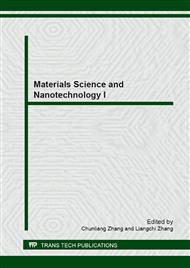[1]
C. Undeger ,F. Polat. (2007)"Real-time edge follow: a real-time path search approach," IEEE Transactions on Systems Man, and Cybernetics-Part C: Application and Reviews, vol. 37, no. 5, pp: 860-872.
DOI: 10.1109/tsmcc.2007.900663
Google Scholar
[2]
F. Janabi-sharifi,W. J. Wilson. (1999)"A fast approach for robot motion planning," Journal of Intelligent and Robotic Systems, no. 25, p.187–212.
Google Scholar
[3]
Minguez, J. and Montano, L.(2004), "Nearness diagram (ND)navigation: collision avoidance in troublesome scenarios",IEEE Trans. Robot. Automat., Vol. 20 No. 1, pp.45-59.
DOI: 10.1109/tra.2003.820849
Google Scholar
[4]
Minguez, J. and Montano, L.(2005), "Sensor-based robotmotion generation in unknown, dynamic and troublesomescenarios", Robot. Autonomous Syst., Vol. 52, pp.290-311.
DOI: 10.1016/j.robot.2005.06.001
Google Scholar
[5]
Stentz, A. and Hebert, M.(1995), "A complete navigation, system for goal acquisition in unknown environments", Autonomous Robots, Vol. 2 No. 2, pp.127-45.
DOI: 10.1007/bf00735431
Google Scholar
[6]
Volpe,R. and Khosla,P, (2010) "Manipulator control with super quadric artificial potential functions: theory and experiments", IEEE Transactions on Systems, Man, and Cybernetics, Vol.20, no.6,pp.1423-36.
DOI: 10.1109/21.61211
Google Scholar
[7]
Vascak,J.(2007) "Navigation of mobile robots using potential fields and computational intelligence means", Acta Polytechnica Hungarica, Vol.4,no.1,pp.63-74.
Google Scholar
[8]
Park, M.G. and Lee, M.C, (2003)"A new technique to escape local minimum in artificial potential field based path planning", KSME International Journal, Vol. 17 No. 12, pp.1876-85.
DOI: 10.1007/bf02982426
Google Scholar
[9]
Park, M.G., Lee, M.C. and Son, K.,(2005) "Real-time path planning in unknown environments using a virtual hill" , 16th IFAC Congress, Prague.
DOI: 10.3182/20050703-6-cz-1902.01280
Google Scholar
[10]
Bell, G. and Weir, M.,(2004) "Forward chaining for robot and agent navigation using potential fields", Proceedings of the 27th Australasian Computer Science Conference, ACSC2004, Dunedin, pp.265-74.
Google Scholar
[11]
Weir, M., Buck, A. and Lewis, J.,(2006) "A mind's eye approach to providing BUG-like guarantees for adaptive obstacle navigation using dynamic potential fields", Lecture Notes in Computer Science, Vol. 4095, Springer, Berlin, pp.239-50.
DOI: 10.1007/11840541_20
Google Scholar
[12]
Antich, J., Ortiz, A. and Minguez, J,(2009) "A bug-inspired algorithm for efficient anytime path planning", IEEE/RSJ Conf. Intel. Robots Syst, pp.5407-13.
DOI: 10.1109/iros.2009.5354182
Google Scholar
[13]
Yi Zhu, Tao Zhang and Jingyan Song (2012)"A new bug-type navigation algorithm for mobile robots in unknown environments containing moving obstacles", Industrial Robot: An International Journal, Vol.39,No.1,p.27–39.
DOI: 10.1108/01439911211192475
Google Scholar


